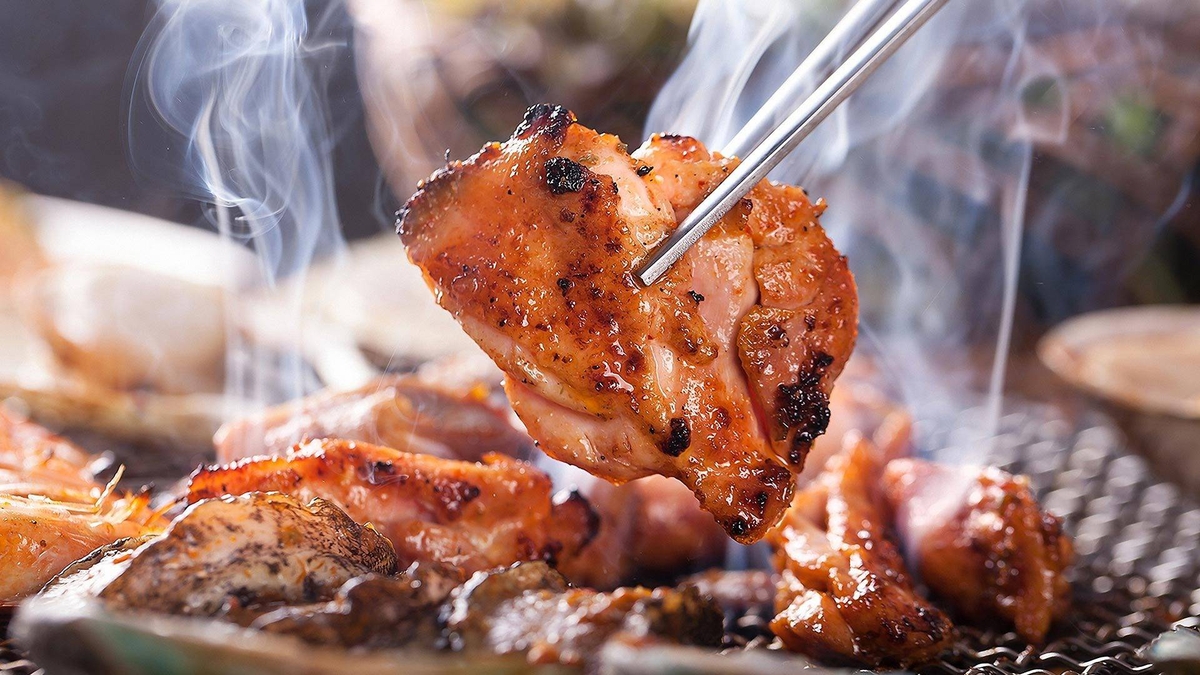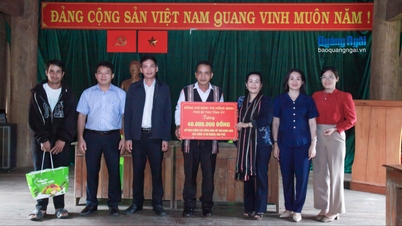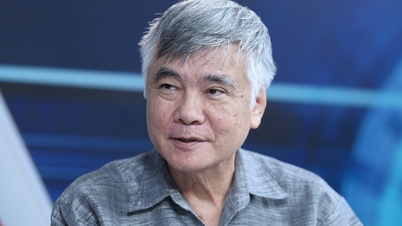In the heart of Vietnam’s Imperial City of Hue, amid the quiet echo of temple bells and the faint scent of frangipani, a palace has been reborn. After nearly eighty years in ruin, Kien Trung Palace - once the private residence of the last Nguyen emperors - now gleams once more in the morning light, its porcelain mosaics shimmering like dragon scales.
When the sun rises over the Imperial Citadel, its rays sweep across the restored façade of Kien Trung, illuminating a story not just of kings and kingdoms, but of resilience, artistry, and revival.
A Palace born of east and west
Standing at the northernmost end of Hue’s Forbidden Purple City, Kien Trung Palace was first built between 1921 and 1923 under Emperor Khai Dinh, and later became home to his successor, Emperor Bao Dai - the final monarch of Vietnam’s last dynasty.
Its architecture was a daring statement for its time. King Khai Dinh, known for his fascination with modernity, envisioned a palace that married Eastern symbolism with Western aesthetics. Classical French balconies framed by Vietnamese motifs, glass doors adorned with imperial dragons, and stairways lined with glazed ceramics created an ambience unlike anything else in royal Vietnam.
Front façade of Kien Trung Palace.
Inside, the palace reflected both tradition and transformation. While the throne rooms retained Confucian symmetry and the imperial color palette of red and gold, the private quarters boasted Western comforts: running water, electric lights, and bathtubs - novelties that hinted at a dynasty caught between two worlds.
But Kien Trung was more than an architectural experiment. It was also a witness to one of the most pivotal moments in Vietnamese history. On 29 August 1945, in the waning days of World War II, Emperor Bao Dai met the delegation of the newly formed Provisional Government of the Democratic Republic of Vietnam here to discuss his abdication. The event marked the symbolic end of over a century of imperial rule.
Two years later, in 1947, the palace was almost completely destroyed during warfare. For decades, it remained a mere shadow - its once-grand staircases overtaken by moss, its ornate façade reduced to rubble. Visitors to the Imperial Citadel would pass by without knowing that this empty patch of earth had once held the heartbeat of Vietnam’s final monarchy.
A Masterpiece reborn
That silence ended in 2019, when Hue authorities embarked on a monumental mission to reconstruct Kien Trung Palace. It was not a project of nostalgia, but of commitment - an effort to piece together fragments of the past using both archaeology and artistry. Experts poured over archival photographs taken by French military officers in the early 20th century, tracing the exact placement of balconies, doors, and decorative motifs. Every surviving foundation stone was preserved.
The project, led by the Hue Monuments Conservation Center, spanned more than 3,800 square meters and cost over VND 123 billions (about USD 5 millions). Engineers faced formidable challenges: stabilizing the site, reinforcing old structures, and ensuring the new materials could withstand Hue’s tropical humidity and earthquakes - all while remaining faithful to the original design.
By early 2024, after five years of meticulous work, the palace finally reopened. And the result was breathtaking.
Valuable royal artifacts displayed inside the palace.
Standing before Kien Trung today feels like stepping into a watercolor painting come to life. Its two-tiered structure rises gracefully, the white façade gleaming against the moody Hue sky. Thousands of fragments of porcelain and glass shimmer in sunlight, forming delicate floral patterns that dance across the walls. The broad stone stairways, re-carved to match archival blueprints, invite visitors to ascend as the emperors once did.
Inside, the rooms exude quiet majesty. Display cases hold royal artifacts - Khai Dinh’s casual robes, dragon-embroidered shoes, and fine porcelain - each piece whispering of a world that once glittered behind silk curtains and gold leaf. From the second-floor balcony, the view stretches over the Forbidden Purple City: tiled roofs, temple courtyards, and the gentle sweep of the Perfume River beyond.
It’s not hard to imagine the emperors themselves pausing here - watching dusk settle over the city that was both their kingdom and their cage.
A Testament to Hue’s vision
For Hue, the revival of Kien Trung Palace is more than an act of restoration - it is a declaration of identity.
The city, long recognized by UNESCO as a World Heritage Site, has endured decades of storms, floods, and the scars of conflict. Many royal structures were lost or damaged, their grandeur fading into memory. Yet Hue’s commitment to its heritage has remained unwavering.
The reconstruction of Kien Trung stands as a symbol of that determination. It demonstrates that heritage preservation in Vietnam has evolved beyond maintenance - it is now re-creation through knowledge. The project united architects, historians, and artisans across generations, blending traditional craftsmanship with modern conservation science.
Valuable royal artifacts displayed inside the palace.
And the results reach beyond architecture. Since reopening, the palace has breathed new life into Hue’s tourism scene. It offers a fresh focal point within the Imperial Citadel - a place where visitors can not only learn history but feel it. Plans are underway to host cultural exhibitions, light shows, and “Imperial Nights” performances within the palace grounds, creating immersive experiences that bridge the past and present.
Such initiatives not only extend visitor stays but also strengthen Hue’s image as Vietnam’s “City of Heritage” - a living museum where history is not frozen but continually reborn.
Walking through time
What makes Kien Trung truly moving is not its grandeur, but its graceful resurrection. To stand in front of its restored façade is to feel the weight of centuries - to sense both the fragility and resilience of culture.
Valuable royal artifacts displayed inside the palace.
Every porcelain shard on its surface tells a story of loss and renewal; every polished column speaks of human devotion to memory. It is a rare place where history feels tangible, where the ghosts of emperors seem to linger in the air, not as relics, but as echoes of continuity.
Hue, with its poetic melancholy and golden light, has always been a city of remembrance. Yet Kien Trung adds a new dimension - not nostalgia, but hope. It reminds visitors that the past can live again, not as ruins, but as inspiration.
IF YOU GO
- Best time to visit: Early morning or sunset. The sunlight reflecting off the porcelain façade creates a luminous, almost dreamlike glow - perfect for photography.
- Where to look: From the second floor, you’ll have one of the most striking panoramic views of the Forbidden Purple City.
- What to see inside: Don’t miss the royal artifacts - Emperor Khai Dinh’s attire, lacquered furniture, and exquisite ceramics, each piece carrying a fragment of royal life.
- Combine your visit: Explore nearby sites such as Thai Hoa Palace and Ngo Mon Gate for a complete picture of Nguyen dynasty architecture.
- Enhance the experience: Join a guided tour with specialists in royal heritage to better understand the palace’s East–West architectural fusion and restoration process.
As twilight descends over Hue, the porcelain of Kien Trung Palace catches the fading light, glowing softly like an ember that refuses to die out. For the city and its people, this palace is more than a monument - it is a reborn soul, shimmering quietly in the heart of Vietnam’s royal past./.
Text, photos by Quynh Lien



![[Foto] Premiér Pham Minh Chinh předsedá schůzi o bytové politice a trhu s nemovitostmi.](https://vphoto.vietnam.vn/thumb/1200x675/vietnam/resource/IMAGE/2025/11/11/1762838719858_dsc-2107-jpg.webp)





























































































![Transformace Dong Nai OCOP: [Článek 4] Dosažení národních standardních produktů](https://vphoto.vietnam.vn/thumb/402x226/vietnam/resource/IMAGE/2025/11/11/1762825820379_4702-cac-san-pham-trai-cay-chung-nhan-ocop-nongnghiep-174649.jpeg)



![Přechod Dong Nai OCOP: [Článek 3] Propojení cestovního ruchu se spotřebou produktů OCOP](https://vphoto.vietnam.vn/thumb/402x226/vietnam/resource/IMAGE/2025/11/10/1762739199309_1324-2740-7_n-162543_981.jpeg)






Komentář (0)